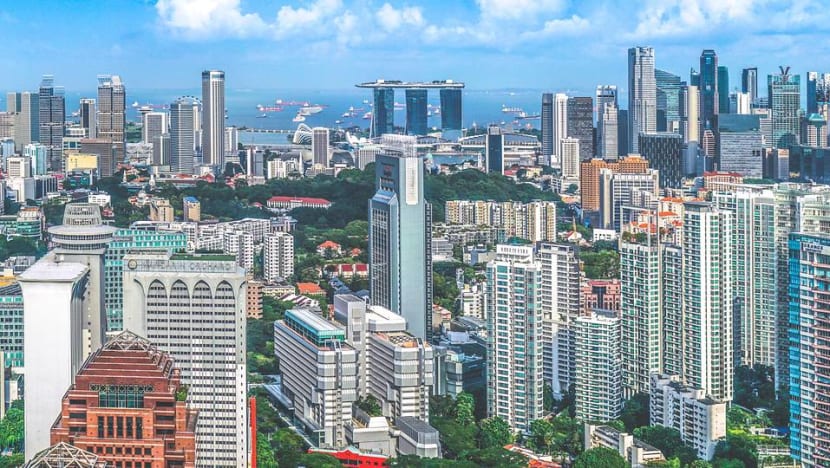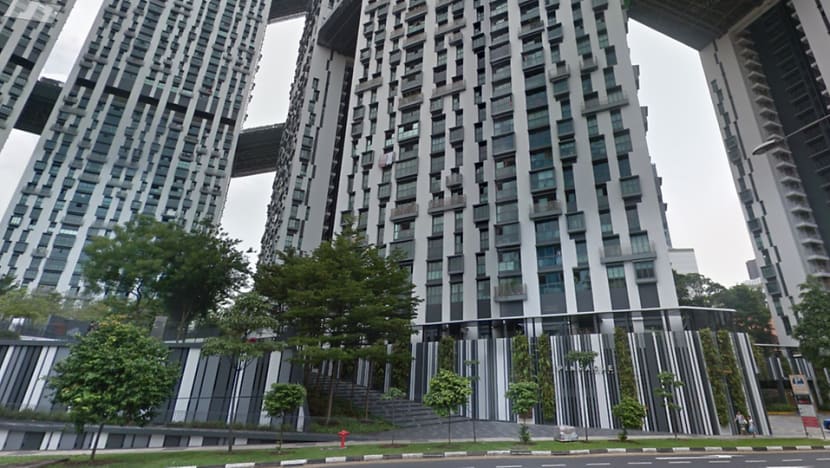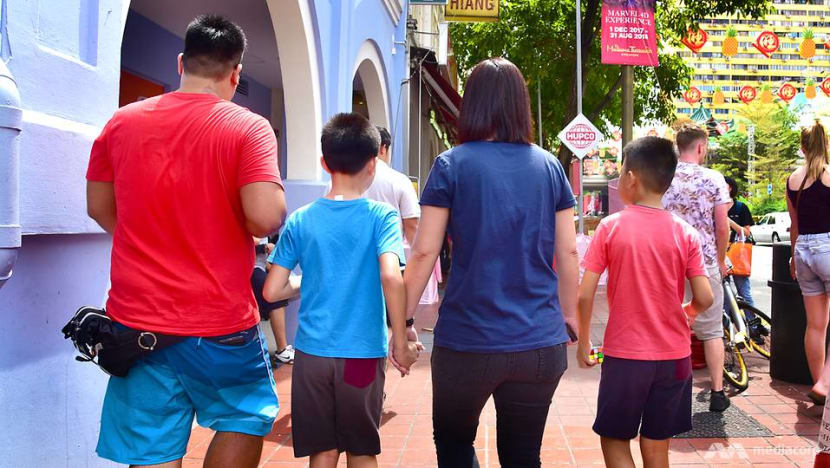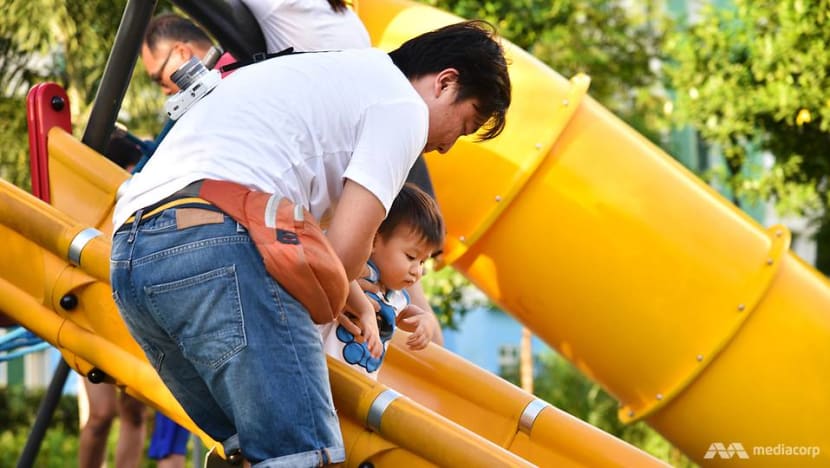commentary Commentary
Commentary: Would you want to raise a family in Singapore’s CBD?
In order for an inner-city project to thrive, it has to cater to the everyday needs of the people living there, says June Yong.

(Photo: Unsplash/Mike Enerio)
SINGAPORE: The Urban Redevelopment Authority (URA) has announced plans to add more homes in the CBD area so that more people can live closer to their workplaces.
Its rationale is to increase the live-in population in the business districts to bring more life to the area after office hours.
Imagine living across the river from the iconic Marina Bay Sands or waking up to the sight of the towering Supertrees of Gardens by the Bay?
Will this move fan the property investment ambitions of HDB upgraders eyeing the potential upside?
THE ALLURE OF CITY HOUSING
At first glance, housing options smack in the city centre may seem more suited for jet-setting singles or married couples without kids. Why would families with school-going children even consider making their nest downtown?
An apartment here is likely to be situated a distance away from the kids’ grandparents, making child-rearing support less feasible or convenient. There are also hardly any primary or secondary schools in the CBD.
Further, because of its District 1 location, a city apartment is not going to come cheap. Having said that, many Singaporeans are attuned to a good investment property when they see one, and a District 1 flat’s potential upside is likely to be its key selling point.
Downtown flats have been said to have a “lottery effect” – if you score one, it feels just like you’ve had a windfall.
Consider the lessons learnt from Pinnacle@Duxton, an award winning public housing project and also the first 50-storey HDB development in Singapore. It probably holds the record for highest price ever fetched by a HDB flat when a 5-room unit was sold in late 2016 for S$1.12 million.
According to a Straits Times news report, when the project was launched in 2004, new 5-room flats were priced from S$345,100 to S$439,400. That equates to over half a million in profit.

Is the distance from extended family members and having little to no schooling options worth such a potential windfall?
Is it really conducive for daily life with children?
KEY CONSIDERATIONS WHEN BUYING A HOME
When I got married some ten years ago, I didn’t get to choose where to live. My husband’s late mother had left him a flat in a central location, and we enjoyed being relatively close to our workplaces.
I must say I appreciate the beauty of a short daily commute.
An article published on Inc. cites research revealing that “each extra minute of commuting time reduces both job and leisure time satisfaction – though not overall life satisfaction – and increases strain and worsens mental health for workers”.
READ: The transport to and from our jobs has become another venue for work, a commentary
A separate article on Forbes asserts that there is a direct link between your commute and life satisfaction.
These findings may make living in the heart of the city more attractive, especially for those who bemoan having to be squashed like sardines on the train at rush hour.
After all, if you work and live in the CBD, your daily commute time might be less than 15 minutes, and you even have the option of cycling or walking to work.
Fast forward ten years and three kids later, our family has shifted slightly further from the CBD, but much closer to our children’s schools. We are also just opposite my in-laws who often help to ferry my daughter after her CCA, and ten minutes away from my ageing godmother.
For us, school and grandparents’ support won out. For some, being close to ageing parents is key, as they have to play the central caregiving role.
Yet others prefer to send their children to their alma mater, and thus choose to live near their choice of school. Others stay put and get used to the long commute.
Every family needs to figure out what is right for them, and which factor takes precedence over others. There is no right answer.

READ: Stressful and rushed but the daily commute is no waste of time, a commentary
I do admit that the potential of gaining half a million cash to store away in the bank makes inner-city living desirable. The money will surely come in handy for my children’s future education. Aren’t sound investments and planning for the future as important as being close to their primary school?
ANY POTENTIAL PITFALLS?
A wise property investor would keep his eyes wide open to catch any potential pitfalls that may accompany a major financial commitment.
Are there hidden “costs” to making your home in the CBD?
As mentioned before, we may be further away from parents who stay in the heartlands. We may have a smaller basket of schools to opt for; the ones that are more centrally located are reputable schools like Raffles Girls Primary School, Anglo-Chinese School (Junior), St Joseph’s Institution Junior, and Singapore Chinese Girls School, and entry to these are likely to be highly competitive.
We may end up paying more for childcare, dining out at pricier food outlets on the weekends, and groceries. Even a trip to the library may take longer than usual. (The libraries located in the central areas barring the central library may not have been designed with children as their main audience).
For someone like me who’s always been an east-sider growing up, and who has now sunk roots in the central-north, I still appreciate the quiet suburban lifestyle of the heartlands.
There are always children playing at the nearby playground, and a congregation of aunties who all seem to know one another and who share good deals on everything ranging from meat to clothing.
The meat or vegetable sellers may recognise you whenever you pass by; you can get a plate of chicken rice at a decent price; and you can count on some neighbour to inform you whenever your child is up to mischief.
Plus, there are lush parks or open spaces nearby for your kids to exert their endless energy.

I’m not denying the perks – any District 1 development will undoubtedly be impressive, designed by some award-winning architect, and fully worth the asking price. But as the adage goes, only fools rush in.
As with any property you purchase, there are risks too.
The regulatory policies surrounding such centrally-located apartments could change. It may no longer be so mind-numbingly simple for us to reap the advantages of a lucky ballot ticket.
Also, with the hefty price tag, it is only available to a select few.
As Singaporeans, we are pragmatic. We know a good deal when we see one, but pay attention to the smaller details as well. In order for a centrally-located project to thrive, it has to cater to the everyday needs of the people living there.
READ: The future of Singapore housing is in bigger HDB flats, a commentary
Will there be natural green spaces to break up the horizon of tall, sleek buildings? Will there be a semblance of community spirit that the heartlands seem to encourage? Will enough paths and walkways be provided for to encourage an active and healthy lifestyle? Will there be young friends for our kids to play with?
With our seasoned urban planners and architects looking into making the city greener and more liveable for families, one can only remain hopeful.
For families with young or school-going children, these are the little things that money cannot buy, but that make everyday life more meaningful and joy-filled.
June Yong is a mother of three, an educational therapist and owner of Mama Wear Papa Shirt, a blog that discusses parenting and education in Singapore.














